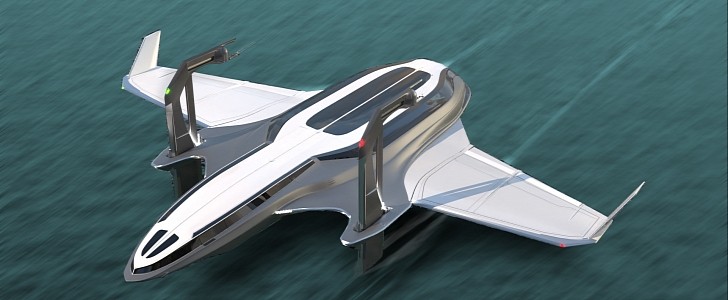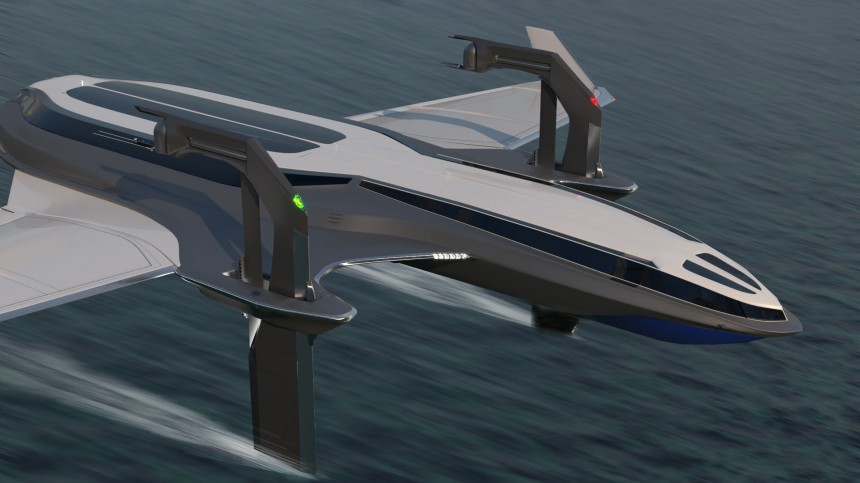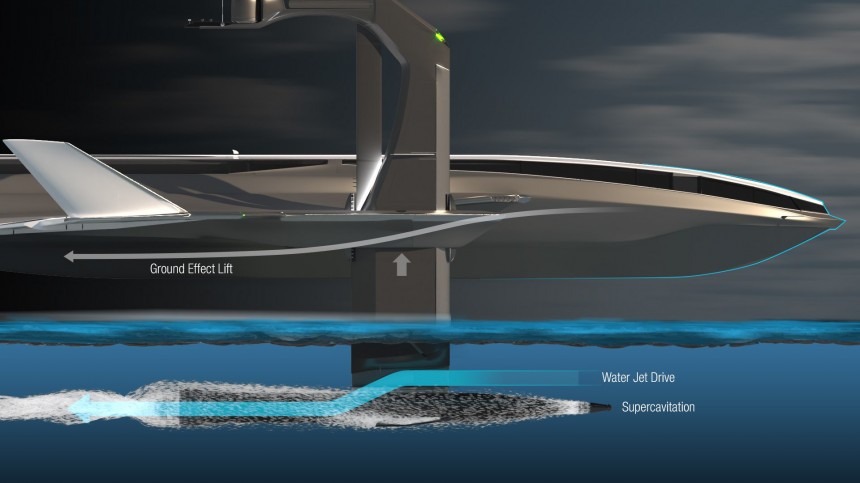A vehicle that uses the ground effect, hydrofoils, and/or Russian torpedo tech is nothing new, but the design we'll be exploring today showcases a combination of all these different technologies. The goal? Speed!
While exploring the world of possibilities, I stumbled across a rather interesting concept from the mind of Darin Osborne, a boat, yacht, and maritime vessel designer from right here in the U.S.A. It's called the Seahorse, and this sea/aircraft includes an array of tech to be the fastest thing on international waters, if only theoretically.
So, what the heck is the Seahorse? Well, you need to realize that this sort of conceptual design has been developed over days, months, maybe even years, and for me to cover its entirety would take some time. Still, with a few waves of my literary wand, I feel I can whip up all that this bugger is designed to achieve and how.
If you've been keeping up with autoevolution, you've seen, heard, or read about vehicles that rely on the ground effect to travel to and from destinations. To put things as simply as possible, winged craft can utilize this effect to minimize the drag exerted on the aircraft, leading to faster travel times and less fuel used; generally, all-around good stuff. That's part of this vehicle's story.
Another propulsion system used in moving the Seahorse is made up of those two torpedoes found hanging underneath the vehicle. Here's where things start getting weird. If you've ever heard the term "Shkval," you know what to expect. Yes, this part of the Seahorse functions based on the same principles of this famed Russian weapon.
By creating an air bubble in front of the torpedo and extending it over the projectile's body, or a "supercavity," the Shkval can travel with minimal effort due to, once again, lowered friction, allowing them to reach speeds upwards of 230 mph (370 kph). This same tech seems to be apparent on the Seahorse too. Once coupled with the ground effect, this bugger should be able to achieve speeds higher than modern limits, again, in theory. Just imagine what that's like.
As I explored more of this concept, I realized what its purpose may be. It's for nothing more than to help the rich island hop between destinations and to be used for transportation between larger vessels like superyachts. Considering this bugger is already 219 feet (67 meters) long, I don't see it docking inside any ships; more like a superfast shuttle service.
In case you're stuck waiting in queue to board a ship, part of the Seahorse is used to accommodate guests at bars, dining tables, or just lounge around. The craft's exterior also appears to boast walkable areas where guests can venture and even take a seat, dangling their feet over the edge.
Finally, in line with modern technological trends, this concept is designed as an EV. Yes, an electric vehicle, and one which has no details on the amount of energy needed to make it work. After all, it is just a concept and one that we may never even see in real life.
So then, what is the purpose of such ideas that I'm throwing at you? It's all about creativity and the ability to think outside the proverbial box. Oh, and let's not forget that everything you see moving around on the seas, through the air, and on city streets started out as nothing more than an idea that was taken to paper and eventually into a real toy.
At the end of the day, we can't disregard such ideas simply because they're nothing more than a visual representation; they can be used to inspire the next generation of bright minds if we're not able to pull something like this off.
So, what the heck is the Seahorse? Well, you need to realize that this sort of conceptual design has been developed over days, months, maybe even years, and for me to cover its entirety would take some time. Still, with a few waves of my literary wand, I feel I can whip up all that this bugger is designed to achieve and how.
If you've been keeping up with autoevolution, you've seen, heard, or read about vehicles that rely on the ground effect to travel to and from destinations. To put things as simply as possible, winged craft can utilize this effect to minimize the drag exerted on the aircraft, leading to faster travel times and less fuel used; generally, all-around good stuff. That's part of this vehicle's story.
By creating an air bubble in front of the torpedo and extending it over the projectile's body, or a "supercavity," the Shkval can travel with minimal effort due to, once again, lowered friction, allowing them to reach speeds upwards of 230 mph (370 kph). This same tech seems to be apparent on the Seahorse too. Once coupled with the ground effect, this bugger should be able to achieve speeds higher than modern limits, again, in theory. Just imagine what that's like.
As I explored more of this concept, I realized what its purpose may be. It's for nothing more than to help the rich island hop between destinations and to be used for transportation between larger vessels like superyachts. Considering this bugger is already 219 feet (67 meters) long, I don't see it docking inside any ships; more like a superfast shuttle service.
In case you're stuck waiting in queue to board a ship, part of the Seahorse is used to accommodate guests at bars, dining tables, or just lounge around. The craft's exterior also appears to boast walkable areas where guests can venture and even take a seat, dangling their feet over the edge.
So then, what is the purpose of such ideas that I'm throwing at you? It's all about creativity and the ability to think outside the proverbial box. Oh, and let's not forget that everything you see moving around on the seas, through the air, and on city streets started out as nothing more than an idea that was taken to paper and eventually into a real toy.
At the end of the day, we can't disregard such ideas simply because they're nothing more than a visual representation; they can be used to inspire the next generation of bright minds if we're not able to pull something like this off.


















